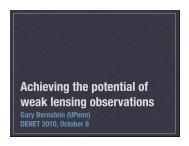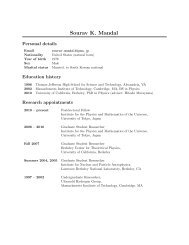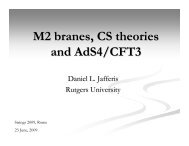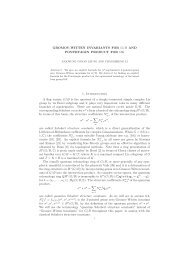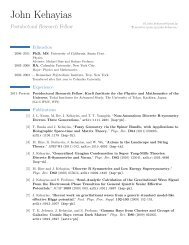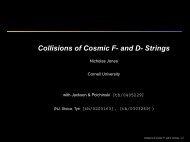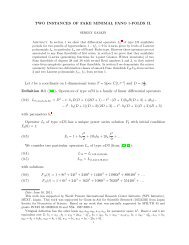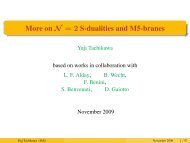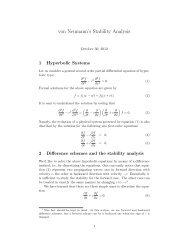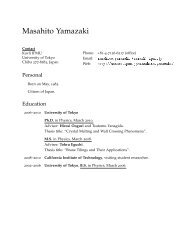STUDY SUMMARY - IPMU
STUDY SUMMARY - IPMU
STUDY SUMMARY - IPMU
You also want an ePaper? Increase the reach of your titles
YUMPU automatically turns print PDFs into web optimized ePapers that Google loves.
<strong>SUMMARY</strong> REPORT<br />
WIDE FIELD FIBER-FED OPTICAL<br />
MULTI-OBJECT SPECTROMETER (WFMOS)<br />
ance, or 3) added risk. A list of descopes and trigger dates will be used to balance any cost overruns<br />
within the framework of balancing risk in the instrument. The most important feature of this<br />
approach is to implement the descope in a timely manner. Features maintained in the descope list<br />
are:<br />
• Descope options, with implementation approach<br />
• The resulting acceptable reduced performance or risk position.<br />
• The schedule milestones related to the required decisions.<br />
• The budget impact if the options are exercised at the identified milestones.<br />
• The survey success impact.<br />
• Reserve Management.<br />
This strategy has been used successfully on other projects that have faced similar cost caps<br />
such as M3, recently delivered, and the Nuclear Spectroscopic Telescope Array (NuSTAR) project,<br />
currently in Phase C/D. A formal process that may include a trade study to review the impact<br />
and final approval from the management team is required to exercise the descope. The advisory<br />
board may be involved if the change is significant and Gemini will be consulted on any<br />
descope that affects a Level 1 or Level 2 requirement. The challenge is that the time to exercise a<br />
descope effectively is often early and there is a tendency to want to defer in order to maintain all<br />
features of the original design. A descope list will be developed further at the start of the study,<br />
but at this time two high-level descopes are to reduce total number of positioners and to use<br />
standard spectrograph CCDs instead of custom CCDs. For the positioners, there are several execution<br />
dates: 1) start of positioner contract, 2) parts procurement, 3) positioner assembly, and 4)<br />
bench assembly. At each stage, the cost savings decreases, but this allows the flexibility to maintain<br />
the baseline design as long as possible. We can also generate multiple trigger dates in the<br />
procurement of custom CCDs. Similarly, cost savings decrease with time, but the option retains<br />
the advantages of the system for as long as possible.<br />
Both of these descope options described effectively increase the survey time. Science goals<br />
are still achievable, but the instrument is less efficient.<br />
75



